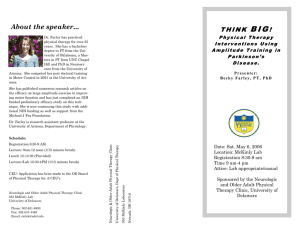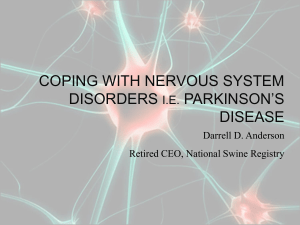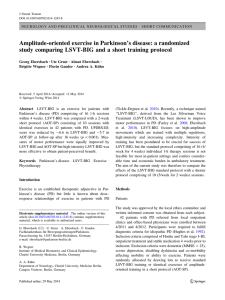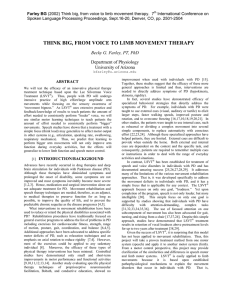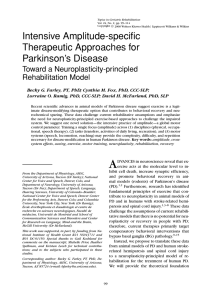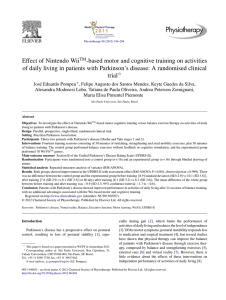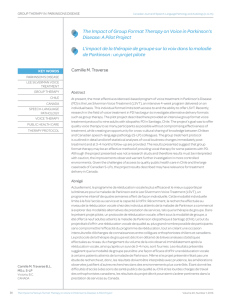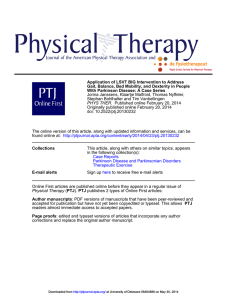TITLE: “The Science and Practice of Amplitude-based Therapies in
advertisement
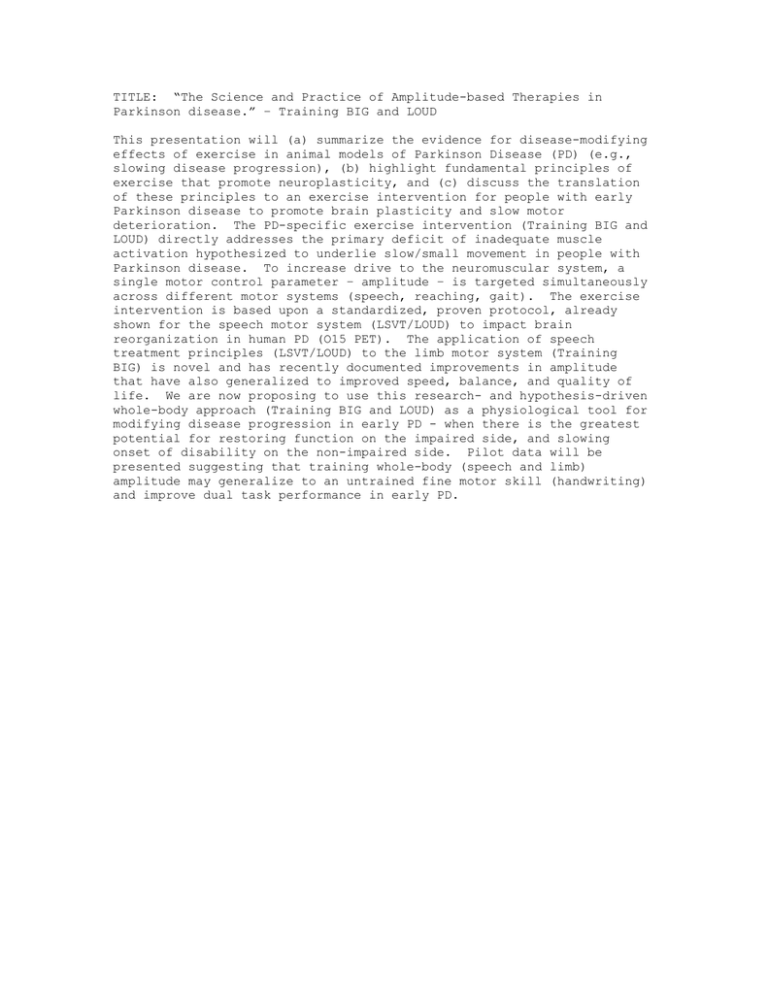
TITLE: “The Science and Practice of Amplitude-based Therapies in Parkinson disease.” – Training BIG and LOUD This presentation will (a) summarize the evidence for disease-modifying effects of exercise in animal models of Parkinson Disease (PD) (e.g., slowing disease progression), (b) highlight fundamental principles of exercise that promote neuroplasticity, and (c) discuss the translation of these principles to an exercise intervention for people with early Parkinson disease to promote brain plasticity and slow motor deterioration. The PD-specific exercise intervention (Training BIG and LOUD) directly addresses the primary deficit of inadequate muscle activation hypothesized to underlie slow/small movement in people with Parkinson disease. To increase drive to the neuromuscular system, a single motor control parameter – amplitude – is targeted simultaneously across different motor systems (speech, reaching, gait). The exercise intervention is based upon a standardized, proven protocol, already shown for the speech motor system (LSVT/LOUD) to impact brain reorganization in human PD (O15 PET). The application of speech treatment principles (LSVT/LOUD) to the limb motor system (Training BIG) is novel and has recently documented improvements in amplitude that have also generalized to improved speed, balance, and quality of life. We are now proposing to use this research- and hypothesis-driven whole-body approach (Training BIG and LOUD) as a physiological tool for modifying disease progression in early PD - when there is the greatest potential for restoring function on the impaired side, and slowing onset of disability on the non-impaired side. Pilot data will be presented suggesting that training whole-body (speech and limb) amplitude may generalize to an untrained fine motor skill (handwriting) and improve dual task performance in early PD.

